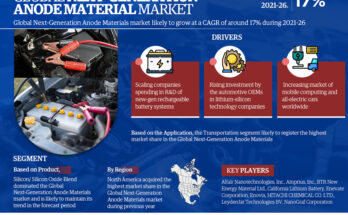Global Encapsulation Resins Market has valued at USD4.17 billion in 2022 and is anticipated to project robust growth in the forecast period with a CAGR of 3.65% through 2028. Encapsulation resins, also known as potting resins or casting resins, are specially formulated materials widely utilized in various industries to provide protection and insulation to electronic components or devices.
These resins are specifically designed to create a protective layer that shields the packaged components from moisture, dust, chemicals, and physical damage. The Encapsulation Resins Market With their excellent electrical insulation properties, encapsulation resins effectively prevent short circuits and electric shocks.
Typically, encapsulating resins are thermosetting polymers such as epoxy or polyurethane. These polymers undergo a curing process to form a strong and durable protective layer. This protective coating significantly enhances the lifespan and reliability of the packaged components, making them ideal for demanding applications and environments, including automotive, aerospace, electronics, and telecommunications.
In addition to their widespread use in various industries, encapsulating resins also find extensive application in sensor devices. These resins play a crucial role in safeguarding sensitive electronic components and sensing devices. One of the key advantages they offer is environmental protection. Sensors often operate in harsh conditions, experiencing temperature fluctuations, humidity, chemical exposure, and mechanical stress. The encapsulation resin acts as a barrier, shielding these delicate parts from external factors.
Furthermore, many sensors rely on electrical signals for their operation. Encapsulation resins with high dielectric strength serve as excellent electrical insulators, effectively preventing short circuits and minimizing signal interference. Apart from electrical protection, encapsulation resins are primarily employed to shield electronic products and equipment from physical shocks, corrosive gases, chemicals, heat, and dust, among other potential hazards. These resins can be used for packaging individual components or entire units, ensuring comprehensive protection in demanding environments.
By utilizing encapsulating resins, industries can ensure the longevity, reliability, and performance of their electronic components and devices, even in challenging operating conditions.
Key Market Drivers- Encapsulation Resins Market
- Growing Demand for Encapsulation Resins in the Automotive Industry
Encapsulation resins play a crucial role in the automotive industry’s electronic systems by providing a protective layer for sensitive components. These resins are specifically designed to encapsulate and safeguard electronic parts, including sensors, microcontrollers, and power modules, against harsh operating conditions. By offering excellent thermal conductivity, electrical insulation, and environmental resistance, encapsulation resins ensure the optimal performance and longevity of these components, making them highly desirable for use in vehicles.
To Download FREE Sample Pages of this Report📥 @ https://www.techsciresearch.com/sample-report.aspx?cid=20781
The demand for encapsulation resins has been further amplified by the growing prevalence of electric vehicles (EVs) and hybrid electric vehicles (HEVs). As these vehicles require high-performance electronic systems, such as battery management systems and power control units, the need for reliable encapsulation resins becomes even more critical. These resins not only protect the sensitive electronics from external factors but also contribute to the overall functionality and safety of the vehicle.
The automotive industry is currently experiencing a rapid transformation driven by technological advancements, such as autonomous driving, connected cars, and electrification. These innovations necessitate the integration of sophisticated electronics into vehicles, which in turn require robust protection from various environmental factors like vibration, moisture, dust, and temperature fluctuations. Encapsulation resins serve as a vital solution to meet these challenges, ensuring the reliability and durability of electronic components in the modern automotive landscape.
Furthermore, the advent of autonomous vehicles has led to a substantial increase in the number of sensors and electronic components per vehicle. Each of these components necessitates proper encapsulation for long-term protection and functionality, further driving up the demand for encapsulation resins in the automotive industry.
In addition to technological advancements, government regulations worldwide are also pushing automakers towards producing cleaner and more efficient vehicles. The shift towards electrification has resulted in a surge in the production of EVs and HEVs, which inherently require a higher number of electronic components compared to conventional vehicles. To ensure the longevity and reliability of these components, encapsulation resins are indispensable, thus fueling the demand for their usage in the automotive sector.
In summary, encapsulation resins play a fundamental role in protecting and enhancing the performance of electronic components in the automotive industry. With their ability to withstand harsh conditions, provide thermal conductivity, and ensure electrical insulation, encapsulation resins are indispensable in the face of technological advancements, the rise of EVs and HEVs, and the increasing focus on cleaner and more efficient vehicles.
- Growing Demand for Encapsulation Resins in the Electronic Industry
Encapsulation resins play a crucial role in the electronics industry, providing essential protection for delicate electronic components against various environmental factors like moisture, dust, and temperature fluctuations. These resins not only safeguard the components but also offer excellent electrical insulation and thermal conductivity, ensuring optimal performance of electronic devices.
In a wide range of electronic applications, including printed circuit boards, semiconductors, sensors, and transistors, encapsulation resins serve as a shield, preventing physical damage and chemical corrosion. This extends the lifespan and enhances the reliability of these components.
The ever-evolving landscape of the electronics industry, driven by rapid technological advancements, has led to an exponential surge in the demand for encapsulation resins. With the rise of the Internet of Things (IoT), artificial intelligence (AI), and 5G technology, electronic devices have become increasingly complex and miniaturized. The intricate circuits and components in these devices require robust protection, precisely what encapsulation resins offer.
Furthermore, the growing trend towards smart homes and cities, where interconnected electronic devices and sensors are powering the way we live, has further intensified the need for reliable encapsulation solutions. This surge in demand for encapsulation resins is driven by the desire to ensure the longevity and performance of these devices in a connected ecosystem.
The booming consumer electronics sector is another significant driver of the encapsulation resins market. The proliferation of smartphones, tablets, wearable devices, and home entertainment systems has significantly increased the demand for encapsulation resins. These devices are often exposed to harsh environments and heavy usage, which necessitates high-quality encapsulation to ensure their durability and optimal performance.
Key Players-Encapsulation Resins Market
- Henkel AG KGaA
- Hitachi Chemical Industries Co., Ltd.
- Huntsman International LLC
- H.B. Fuller Company
- Acc Silicones Ltd
- BASF SE
- The Dow Chemical Company
- Fuji Chemical Industry Co Ltd
- Shin-Etsu Chemical Co Ltd.
- Robnor ResinLab Ltd
To Download FREE Sample Pages of this Report📥 @ https://www.techsciresearch.com/sample-report.aspx?cid=20781
Key Challenges-Encapsulation Resins Market
- Volatility in Price of Raw Materials
Encapsulation resins, which are commonly used in various industries, are primarily composed of raw materials such as epoxy resins, silicones, and polyurethanes. These raw materials serve as the building blocks for the production of encapsulation resins, and their prices can exhibit significant volatility due to various factors.
You may also read:
Pyrophyllite Market [2028] – Report & Market Share
Thermal Paper Market Analysis, Development [2028], Key Terms
Self-Adhesive Labels Market | [2028] Exploring Growth, Potential and Future, Trends
Table of Content-Encapsulation Resins Market
- Product Overview
1.1. Market Definition
1.2. Scope of the Market
1.2.1. Markets Covered
1.2.2. Years Considered for Study
1.2.3. Key Market Segmentations
- Research Methodology
2.1. Objective of the Study
2.2. Baseline Methodology
2.3. Key Industry Partners
2.4. Major Association and Secondary Applications
2.5. Forecasting Methodology
2.6. Data Triangulation & Validation
2.7. Assumptions and Limitations
- Executive Summary
3.1. Overview of the Market
3.2. Overview of Key Market Segmentations
3.3. Overview of Key Market Players
3.4. Overview of Key Regions/Countries
3.5. Overview of Market Drivers, Challenges, Trends
- Impact of COVID-19 on Global Encapsulation Resins Market
- Global Encapsulation Resins Market Outlook
5.1. Market Size & Forecast
5.1.1. By Value
5.2. Market Share & Forecast
5.2.1. By Resin Type (Epoxy Resins, Polyurethane Resins, Silicone Resins, Others)
5.2.2. By End User (Automotive, Consumer Electronics, Industrial, Telecommunication, Others)
5.2.3. By Region
5.2.4. By Company (2022)
5.3. Market Map
- Asia Pacific Encapsulation Resins Market Outlook
6.1. Market Size & Forecast
6.1.1. By Value
6.2. Market Share & Forecast
6.2.1. By Resin Type
6.2.2. By End User
6.2.3. By Country
6.3. Asia Pacific: Country Analysis
6.3.1. China Encapsulation Resins Market Outlook
6.3.1.1. Market Size & Forecast
6.3.1.1.1. By Value
6.3.1.2. Market Share & Forecast
6.3.1.2.1. By Resin Type
6.3.1.2.2. By End User
6.3.2. India Encapsulation Resins Market Outlook
6.3.2.1. Market Size & Forecast
6.3.2.1.1. By Value
6.3.2.2. Market Share & Forecast
6.3.2.2.1. By Resin Type
6.3.2.2.2. By End User
6.3.3. Australia Encapsulation Resins Market Outlook
6.3.3.1. Market Size & Forecast
6.3.3.1.1. By Value
6.3.3.2. Market Share & Forecast
6.3.3.2.1. By Resin Type
6.3.3.2.2. By End User
6.3.4. Japan Encapsulation Resins Market Outlook
6.3.4.1. Market Size & Forecast
6.3.4.1.1. By Value
6.3.4.2. Market Share & Forecast
6.3.4.2.1. By Resin Type
6.3.4.2.2. By End User
6.3.5. South Korea Encapsulation Resins Market Outlook
6.3.5.1. Market Size & Forecast
6.3.5.1.1. By Value
6.3.5.2. Market Share & Forecast
6.3.5.2.1. By Resin Type
6.3.5.2.2. By End User



